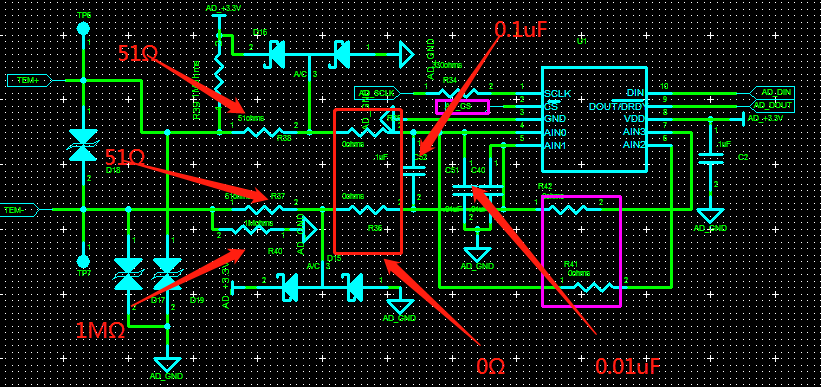Hi,
my customer read ADS1118 internal temperature, and find that it will gradually heat up after power up. The temperature will go up about 1.2C than the initial value after several minutes and then be stable. It's not caused by noise because it's gradually heat up.
The schematic is shown below and no heat source is found. ADS1118 itself will not heat up according to the datasheet. R41, R42 is not soldered so only AIN0, AIN1 is used.
I wonder where may the heat from?
The board is totally only connected through external circuit through wire shown below, so the heat should not be generated from external circuit.
With a fluke multimeter, it shows that the temperature of ADS1118 really goes up about 1.2C





